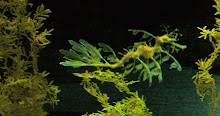
(image= "A Zombie at twilight in a field of cane-sugar in Haiti"- by Jean-Loel Lafargue- this image has a "copy left"
licence- for details, clcik [
here]
Hi, Welcome to Weirdbeautiful.Today I am responding to a request from a regular "Weirdbeautiful" reader, Dolev, who has asked me to post about the Zombie ants story, which has been all over the internet in the last few days. The story is about the fungus
Ophiocordyceps, which "turns ants into zombies and makes them stagger to their death", according to The Guardian news paper; the ants in question being carpenter ants of the species
Camponotus leonardi.
http://www.guardian.co.uk/science/2010/aug/18/zombie-carpenter-ant-fungusThis is "Weird Science"'s take on the same story (thanks for this link, Dolev)-
http://arstechnica.com/science/news/2010/08/weird-science-unleashes-its-fossil-zombie-ants.arsParasites and diseases that manipulate their hosts'/victims' behaviour are rare but not unheard of: the best known example, is probably neurosyphilis (a possible complication of untreated syphilis), which can cause increased libido in its victims- there is an obvious evolutionary basis for this, since this increase in sex-drive can cause the dying syphilitic person to infect others, helping the causative organism (the spirochaetal bacterium-
Treponema pallidum)to spread. There's a really interesting account of neurosyphilis in an elderly woman in Oliver Sacks 's brilliant book "
The Man Who Mistook His Wife for a Hat".

While we are on the subject of Zombies and book recommendations, one of the best books I have read in a very long time is

"
The Serpent and the Rainbow" by Wade Davis; as the book's cover explains, it is the tale of "A Harvard scientist's astonishing journey into the secret societies of Haitian Voodoo, Zombis and Magic". The book is partly about the anthropology of the Haitian voodoun religion/tradition and partly about the chemistry and the pharmacological effects of the various plants used in voodoo ceremonies. Dr Davis's Haitian trip started with a plan to investigate anesthetic drugs from plants and animals used in Haiti/Haitian folklore and ended up with him witnessing various aspects of "Zombi creation"- for want of a better description: a fascinating book.














